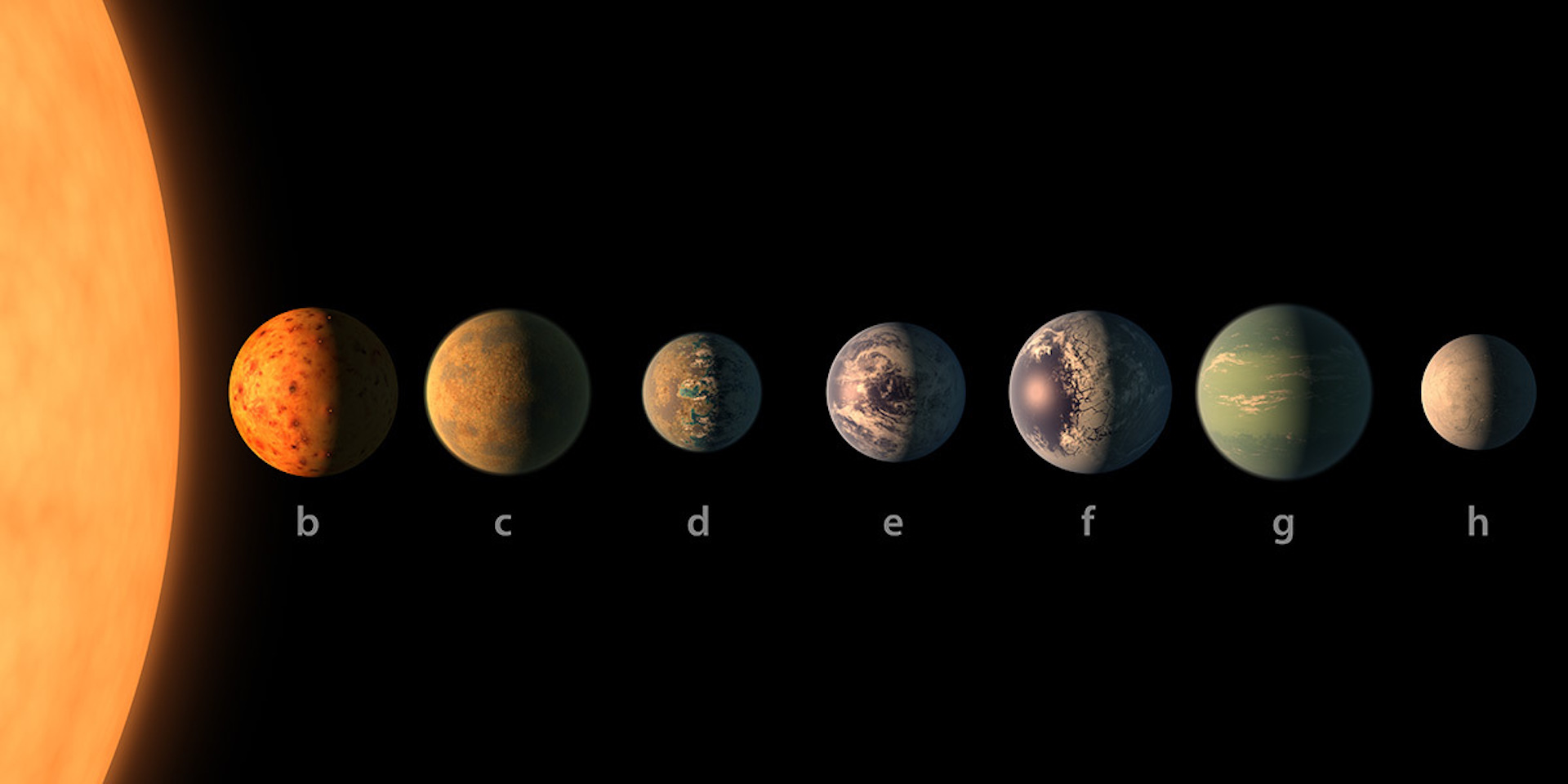Seven Earth-sized exoplanets have been discovered orbiting an “ultra-cool” dwarf star just 40 light years from Earth. All seven could have the conditions necessary to support life, according to a study that appeared Wednesday in the scientific journal Nature.The discovery of the TRAPPIST-1 System “gives a hint that finding a second Earth is not just a matter of if, but when,” Thomas Zurbuchen, associate administrator of NASA’s Science Mission Directorate, said at a press conference Wednesday.All seven of the exoplanets — currently referred to by the letters ‘b’ through ‘h’ — could have liquid water, and three of the planets — ‘e’, ‘f’, and ‘g’ — are orbiting within the right range of distances from the dwarf star to potentially allow oceans to form on the planet’s surface. Sara Seager, professor of planetary science and physics at the Massachusetts Institute of Technology, noted at Wednesday’s conference that all eyes will now be shifting toward TRAPPIST-1. ”In astronomy, when someone makes a discovery like this, we put almost any telescope that can follow up, to follow up,” she said.The next major step in observing the TRAPPIST-1 System will come later in 2018, with the launch of the James Webb Space Telescope. It will be able to observe the atmospheres and greenhouse gas content of the exoplanets, which in turn will allow astronomers to assess whether their surface temperatures are suitable for liquid water and life. Seager added the telescope will be searching for gases produced by life, such as oxygen and methane.“With this discovery we’ve made a giant, accelerated leap forward in the search for inhabited worlds and life on other worlds, potentially speaking,” she said.
Sara Seager, professor of planetary science and physics at the Massachusetts Institute of Technology, noted at Wednesday’s conference that all eyes will now be shifting toward TRAPPIST-1. ”In astronomy, when someone makes a discovery like this, we put almost any telescope that can follow up, to follow up,” she said.The next major step in observing the TRAPPIST-1 System will come later in 2018, with the launch of the James Webb Space Telescope. It will be able to observe the atmospheres and greenhouse gas content of the exoplanets, which in turn will allow astronomers to assess whether their surface temperatures are suitable for liquid water and life. Seager added the telescope will be searching for gases produced by life, such as oxygen and methane.“With this discovery we’ve made a giant, accelerated leap forward in the search for inhabited worlds and life on other worlds, potentially speaking,” she said.
Advertisement
